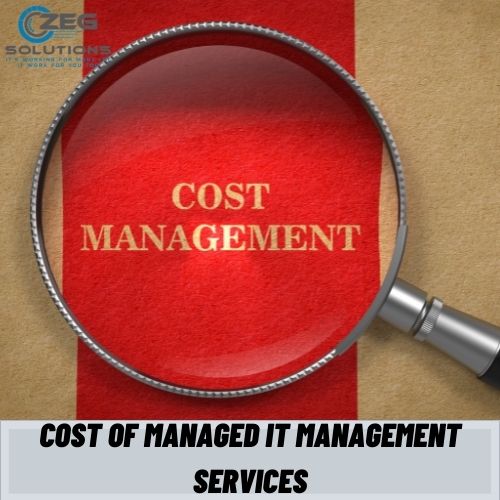Managed IT services help businesses a lot, so as it expands, various companies are looking to use these valuable and cost-effective managed services.
IT encompasses the business world and is increasingly used and noticed by users and businesses.
But the question for many people is how much it costs to use these services and whether they have the financial strength to use them.
So today, we are going to talk about how to calculate the cost of managed services.
What do managed IT services do?
An IT-managed service is a contract that is entered into between you and another company to perform a part of the task, operation, work, or process that was to be completed by the employees of your company’s IT department within a certain period. Outsourcing a portion of a company can meet those job needs in that company and ultimately eliminate them.
Managed services are responsible for IT operations, and a wide range of services are provided to customers by these service providers.
As:
• Doing IT
• Save information
• Monitor network security and prevent and control it
• Network virtualization
• Provide web hosting
• Installation and updating
• Spam filter
• Antivirus
• Cloud applications
• Smartphones and laptops
• Check connection problems
Reasons to use managed IT services
There are many reasons to use these services, including the following:
1. Lack of resources
2. Coordination with the core of the business
3. Reduce costs
4. Business flexibility
Benefits of Outsourcing IT Management Services
1. Focus on core activities
2. Cost savings
3. Operational control
4. Workforce flexibility
5. Risk management and increase business viability
6. Use of specialized staff
Costs of managed IT management services
Because managed service companies offer a wide range of services at customers’ request, the cost of managed services is highly variable and depends on various factors.
Comprehensive or partial services:
The first thing to note is that you are using comprehensive IT services or content with outsourcing.
several users:
One of these factors is the number of users. You have to pay a separate fee for each user.
Several devices:
The number of devices is also significant and affects the price. Each device can have a different cost.
Support rate:
The cost of support services also depends on the number of services provided to you. How much support do you want?
Cloud systems:
If you use cloud systems that provide more infrastructure, you will have to pay more. But the problem of creating additional costs is no longer variable.
Participation rate:
The amount of team participation required by the managed IT services team is also an essential determinant of the amount of money you incur.
These services have different prices. For example, if the IT team is only responsible for monitoring your system, they will only receive this small fee. Once the status is notified to you, you will decide who will take corrective action. If you do this yourself, you will not have to pay extra; if you choose a managed service company to solve the problem, it will increase your costs.
The remarkable thing
But the important thing is that the pricing criteria are transparent and available to customers.
So that customers can act with full knowledge of their services and costs.
The three main categories of IT managed services
Services can be divided into general categories:
1. Managed infrastructure
2. Partially managed services
3. Fully managed service
But what are the characteristics of each of these categories?
1. Managed infrastructure:
They are responsible for supporting and maintaining the hardware. Such services are less expensive than others. They help and release your employees’ resources. In this case, a separate team within the company must perform IT tasks.
2. Fully managed service
This kind of service eliminates the need for your in-house IT team. In addition, it is efficient and cost-effective.
3. Partially managed services
If your company has an IT team, you can use such services to fill the gaps and gaps in your work. With such services, you can easily choose the services you want to use.
The exciting and attractive point is that you have the full right to choose different services that suit your needs and budgets.
For example, do you need commercial software, cloud applications, personal computers, anti-virus software, intelligent tools, warehouse connection?
Or you want to have the internal staff or a certain amount per month.
Features of IT service provider
What is essential for a service provider is:
• It is necessary to provide partial to general services according to the customer’s wishes.
• The cost of each service must be clearly defined.
• The services it provides and the results are clearly stated.
• Provide the customer with a detailed contract with a clear list of services and prices.
• The contract specifies precisely all the services provided to a service requester and their cost.
• So that no additional costs are claimed from the customer later.
Tips for IT service seekers:
1. Why is there a service provider?
2. What is the budget of the company and business?
3. What are the consequences for the business if these needs are not met?
Conclusion
Now is the period of technology, and if you want to be successful in your business, you need to use this unique tool. But this productivity requires specialized staff and sufficient devices. Outsourcing IT and getting help from managed IT services can help you and your business.
Therefore, paying the companies providing these services is cost-effective and valuable. Plus, it keeps your business up to date.
You can manage your expenses depending on the services you receive and the needs you have, and by concluding a clear and precise contract, you can avoid getting caught in heavy bills.



